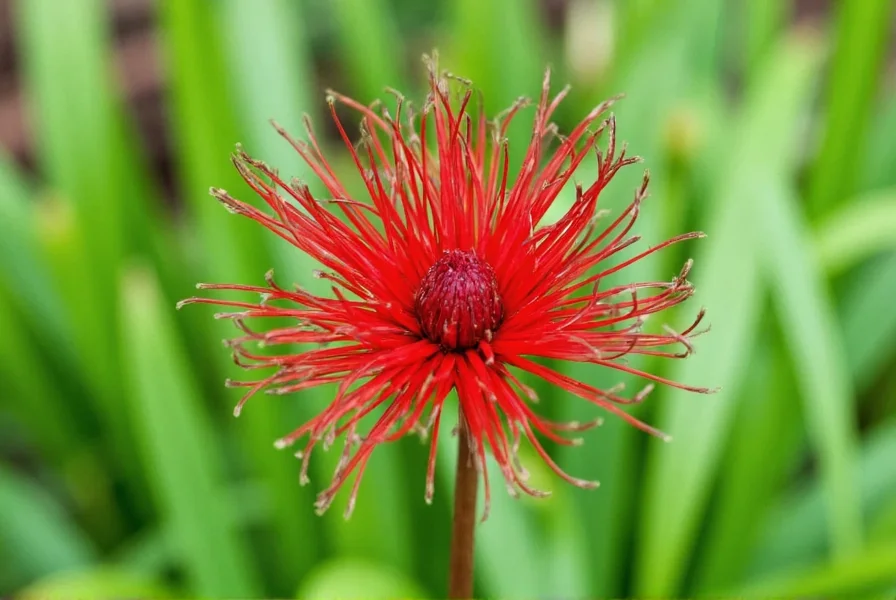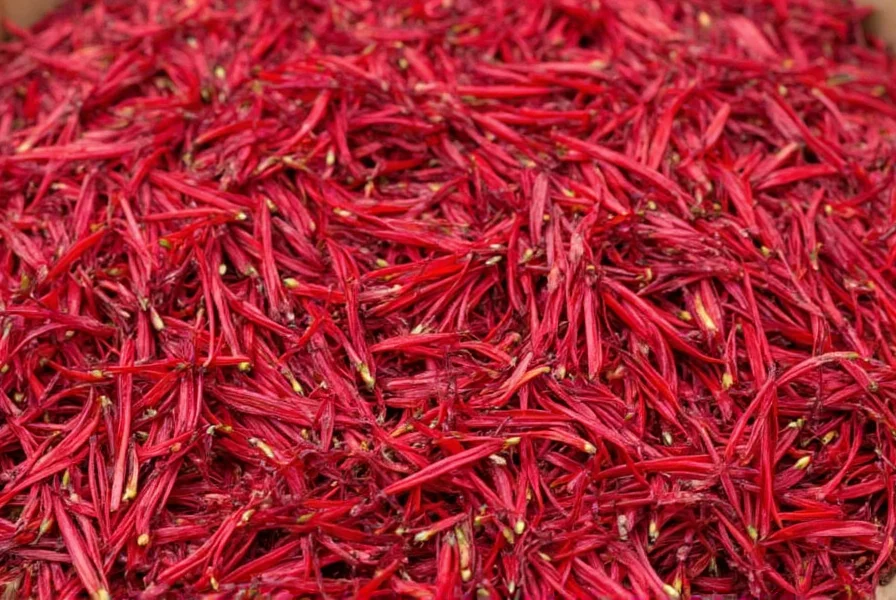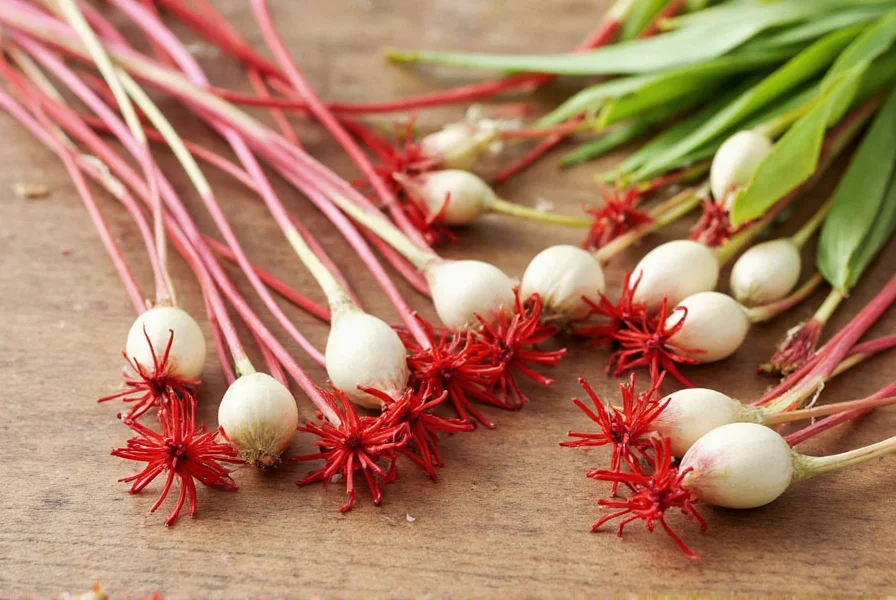Saffron cultivation begins with understanding the true nature of what many call “saffron bulbs.” These aren't technically bulbs at all, but rather corms—solid, swollen stem bases that store nutrients for the Crocus sativus plant. This distinction matters significantly for successful cultivation, as corms have different planting requirements than true bulbs like tulips or onions.
The Botanical Reality of Saffron “Bulbs”
When discussing saffron bulb planting requirements, it's essential to recognize we're working with Crocus sativus corms. These small, rounded structures (typically 2-3 cm in diameter) contain all the energy needed for the plant to produce its distinctive purple flowers and the precious red stigmas we know as saffron.
Unlike true bulbs that have layered scales, corms are solid throughout. This structural difference affects their storage, planting depth, and seasonal cycle. The corms go dormant during summer heat, then sprout in early fall when temperatures cool, producing flowers within 4-6 weeks of planting.
Optimal Conditions for Saffron Corms
Successful saffron cultivation depends on replicating the Mediterranean climate where Crocus sativus thrives. Understanding when to plant saffron bulbs by climate zone is crucial for a productive harvest.
| Climate Zone | Optimal Planting Time | First Flowering Period |
|---|---|---|
| USDA Zones 6-7 | Early September | Mid-October |
| USDA Zones 8-9 | Mid to Late September | Late October |
| Cooler Northern Regions | August | Early October |
| Warmer Southern Regions | October | Mid-November |
Planting Saffron Corms: A Step-by-Step Guide
Follow these steps for successful saffron crocus planting and care:
- Prepare the soil 4-6 weeks before planting by incorporating organic matter. Saffron corms require excellent drainage—sandy loam with pH 6-8 works best.
- Choose healthy corms (25g or larger for best results). Larger corms produce more flowers.
- Plant at proper depth—10-15 cm deep (4-6 inches), with the pointed end facing upward.
- Space corms 10-15 cm (4-6 inches) apart in rows 20-30 cm (8-12 inches) apart.
- Water thoroughly after planting, then only when soil feels dry to the touch.
For meaningful harvests, plant in substantial quantities—a minimum of 50 corms for noticeable yield, with 100+ recommended for culinary use. Remember that each flower produces only three stigmas, and it takes approximately 150 flowers to yield just 1 gram of dried saffron.

Caring for Saffron Crocus After Planting
Proper saffron bulb care after planting ensures healthy growth and maximum flower production:
- Watering—Keep soil moderately moist but never waterlogged. Overwatering causes corm rot. Water deeply but infrequently.
- Fertilization—Apply balanced fertilizer (5-10-10) when shoots appear, then again after flowering.
- Pest management—Watch for rodents and birds that may disturb newly planted corms. Use wire mesh if necessary.
- Dormancy period—After flowering, allow foliage to die back naturally to replenish corm energy for next season.
During summer dormancy, protect corms from excessive moisture. In regions with heavy summer rains, consider lifting and storing corms in a cool, dry place until replanting time.
Harvesting Saffron: Timing and Technique
The most critical phase of growing saffron at home is harvesting the delicate stigmas:
- Flowers appear in the morning and begin to close by afternoon—harvest timing is crucial
- Pick flowers early in the morning when fully open but before they start to wilt
- Immediately remove the three red stigmas using tweezers or fingernails
- Dry stigmas quickly on a mesh screen in a warm, dark, well-ventilated area
- Store dried saffron in an airtight container away from light
Yield expectations for home growers: 100 corms typically produce 10-20 flowers per day over a 2-3 week period, yielding approximately 0.5-1 gram of dried saffron. This explains saffron's status as the world's most expensive spice.

Common Mistakes to Avoid When Growing Saffron
Many first-time growers encounter these saffron cultivation challenges:
- Planting too shallow—leads to poor root development and corm division
- Overwatering—the most common cause of corm rot, especially in clay soils
- Using poor quality corms—small or diseased corms produce few flowers
- Harvesting too late—closed flowers make stigma extraction difficult
- Improper drying—excessive heat destroys saffron's delicate flavor compounds
For best results with your saffron bulb planting guide, source corms from reputable suppliers specializing in Crocus sativus. Avoid generic “saffron bulbs” sold by general garden centers, as these often contain inferior or mislabeled varieties.
Frequently Asked Questions
How deep should saffron bulbs be planted?
Saffron corms should be planted 10-15 cm (4-6 inches) deep, with the pointed end facing upward. Proper planting depth is critical for temperature regulation and protection from extreme weather conditions. In heavier soils, plant slightly shallower to prevent rot, while in sandy soils, plant toward the deeper end of the range to maintain moisture.
Can saffron bulbs be grown in containers?
Yes, saffron corms grow well in containers with proper drainage. Use pots at least 20 cm (8 inches) deep with multiple drainage holes. Fill with a mix of potting soil and sand (3:1 ratio) for optimal drainage. Container growing allows better control of soil conditions and makes it easier to protect corms from excessive moisture during summer dormancy. Remember to bring containers indoors if temperatures drop below -10°C (14°F).
How long do saffron corms last before needing replacement?
Healthy saffron corms typically remain productive for 3-5 years before yields significantly decline. Each year, the mother corm produces 1-3 new cormlets. After 3-4 growing seasons, dig up and separate the corms, discarding any small, diseased, or damaged ones. Replant only the largest, healthiest corms (25g or larger) for best results. Proper summer storage during dormancy extends corm viability.
Why aren't my saffron bulbs flowering?
Several factors prevent saffron flowering: planting too shallow, overwatering causing rot, insufficient summer dormancy, inadequate sunlight, or using corms that are too small. Ensure corms receive proper summer drying period, are planted at correct depth (10-15 cm), get at least 6 hours of direct sun daily, and are watered only when soil feels dry. Corms under 20g typically produce few flowers—use larger corms (25g+) for reliable blooming.
What's the difference between saffron bulbs and saffron seeds?
Saffron “bulbs” are actually corms (underground storage organs), while saffron seeds come from the plant's fruit. Commercial saffron production uses corms, not seeds, because Crocus sativus is sterile and doesn't produce viable seeds. The plant reproduces vegetatively through corm division. Attempting to grow saffron from seeds won't produce the desired saffron-producing plants, making corms the only practical method for cultivation.











 浙公网安备
33010002000092号
浙公网安备
33010002000092号 浙B2-20120091-4
浙B2-20120091-4